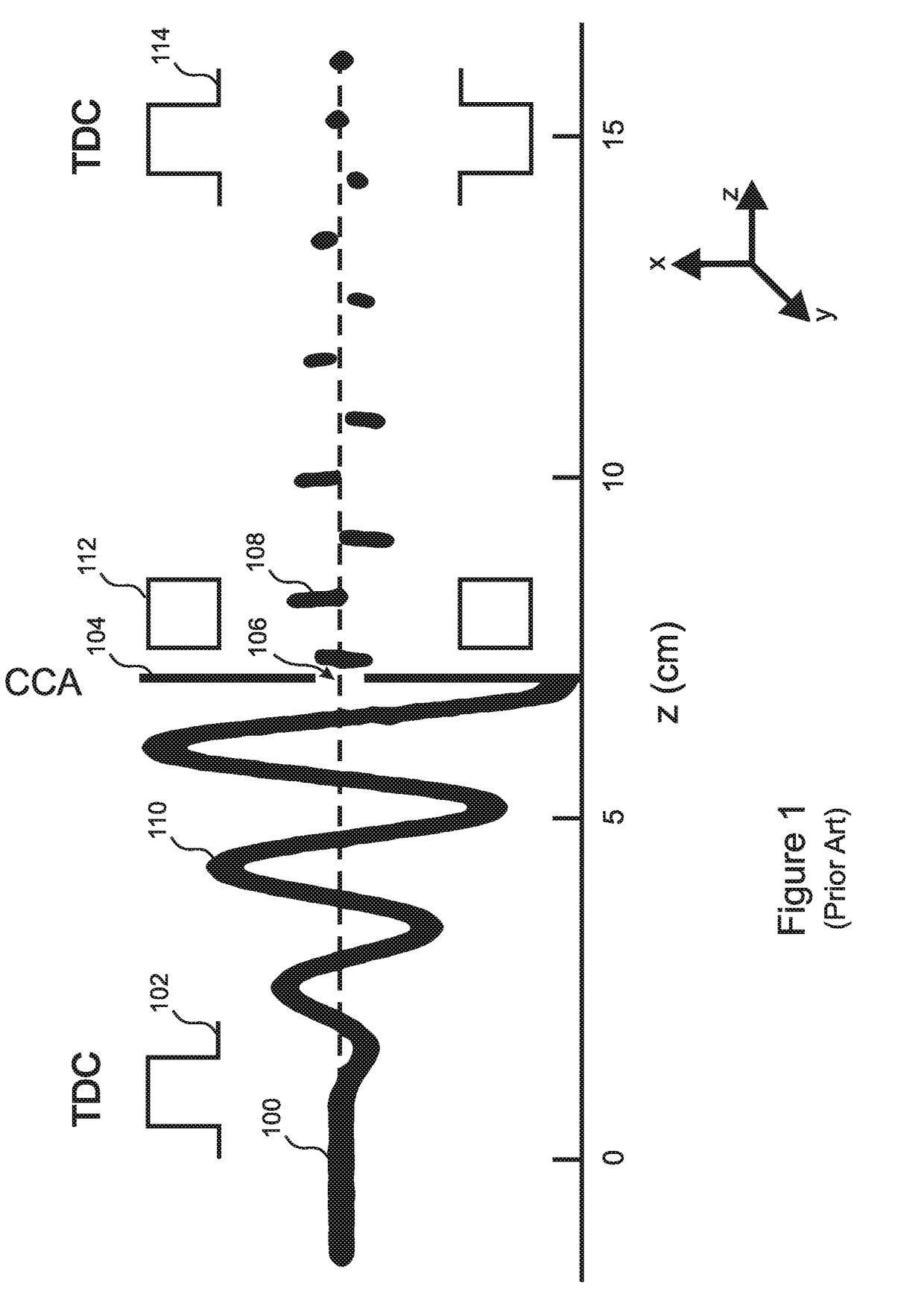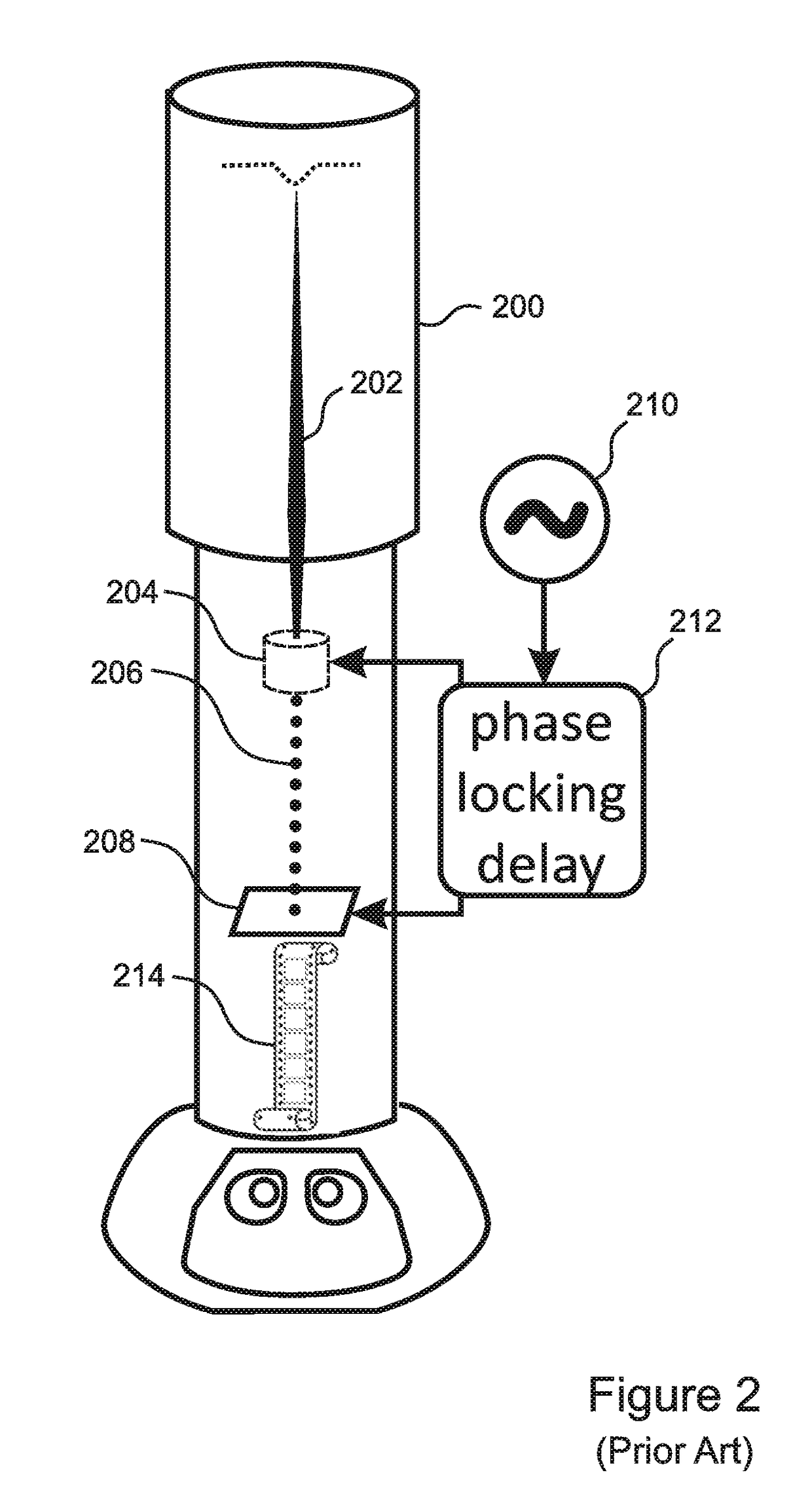Ultra broad band continuously tunable electron beam pulser
a pulser and ultra-wideband technology, applied in the direction of electrical equipment, electric discharge tubes, basic electric elements, etc., can solve the problems of high repetition rate, 1 ghz, and simply not being able to laser-excited electron beams
- Summary
- Abstract
- Description
- Claims
- Application Information
AI Technical Summary
Benefits of technology
Problems solved by technology
Method used
Image
Examples
Embodiment Construction
[0061]A novel EMMP, referred to herein as a TWTS-EMPP is disclosed that is able to produce a pulsed electron beam which is continuously tunable over a wide range of pulse widths and pulsing frequencies. As noted above, the previously introduced TDC-EMMP is limited to only certain discrete pulsing frequencies (i.e. pulse repetition rates) due to the use of a resonant cavity (TDC) as the mechanism for imposing spatial oscillations onto an electron beam. The present invention replaces this oscillation-imposing TDC with a novel Travelling Wave Transmission Stripline (“TWTS”) modulator. In embodiments, the rate of electron pulses produced by the disclosed TWTS-EMMP system can be continuously adjusted between 100 MHz and 20 GHz. In still other embodiments, the TWTS-EMMP system can be continuously adjusted between 100 MHz and 50 GHz.
[0062]With reference to FIG. 3, the TWTS 300 in its most general form includes an outer conductive shell 302 filled with a dielectric 304, which is penetrated ...
PUM
 Login to View More
Login to View More Abstract
Description
Claims
Application Information
 Login to View More
Login to View More - R&D
- Intellectual Property
- Life Sciences
- Materials
- Tech Scout
- Unparalleled Data Quality
- Higher Quality Content
- 60% Fewer Hallucinations
Browse by: Latest US Patents, China's latest patents, Technical Efficacy Thesaurus, Application Domain, Technology Topic, Popular Technical Reports.
© 2025 PatSnap. All rights reserved.Legal|Privacy policy|Modern Slavery Act Transparency Statement|Sitemap|About US| Contact US: help@patsnap.com



